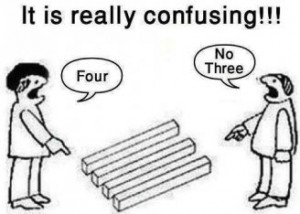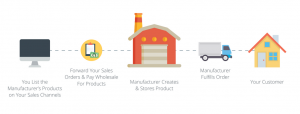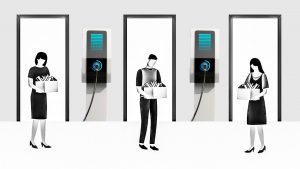
A high website bounce rate is every webmaster’s worst nightmare.
When your website has a visitor, you want them to stick around and see all the things your brand has to offer. If they came to see an article, you want them to stay to read another, and then some more.
It’s relatively easy to build an audience. Using Google Adwords topped with a set of nifty tools, one can achieve global reach for their website ads in a jiffy. The ads might garner an audience for your website, but that is only half-the-battle-won. Sometimes, visitors leave right after visiting one page. This is precisely what leads to a high bounce rate.
Website Bounce Rate Defined
Bounce rate is the percentage of single-page visits (or web sessions). It is the number of visits in which a person leaves your website from the landing page without browsing any further.
Mathematically speaking, bounce rate of a website = the total number of bounces across all the pages on the website (in a given time period) / the total number of entrances across all the pages on the website (in the same time period).
A high bounce rate is an indication that there’s something amiss. Here are the major reasons why visitors bounce off.
1. The Content is Boring
Let’s get the tough one out of the way. If the bounce rate for your website is high, it can be because your content is stuffed with keywords, is bland, and does not make for an interesting read.
This may hurt, but not acknowledging it will hurt your brand way more.
How to fix this: If you manage the content of your website yourself or have an inexperienced writer onboard, you need to stop.
Hire writers who have experience in business storytelling. Anything that is told in the form of a story, and has great pictures and graphics will make for a more interesting landing page. A nicely done video is even better.
The next thing you should do is – run your numbers. Use Google Analytics to find out which of your content has more page views. Try to replicate that kind of success with your other content.
Contently has an attractive landing page that shows what they do and gives examples of their clients work in the form of articles. The content and software building website also has a neat chart showing why they are better than their competitors. There are many interlinks in their landing page, but it doesn’t look cluttered or over the top. This is because they have neatly formatted it, and because every interlink serves a purpose, it hasn’t just been put there for the heck of it.
2. The Website Takes Ages to Load
 You can lose a reader’s attention in the blink of an eye. 40 percent of people will leave your website if it takes more than 3 seconds to load.
You can lose a reader’s attention in the blink of an eye. 40 percent of people will leave your website if it takes more than 3 seconds to load.
Slow load speed is the kind of issue that will make your visitors feel your website isn’t worth their time. A slow website is a pet peeve to visitors. Before you can showcase your content in all its glory, they will have packed up and left.
How to fix this: Find out what is weighing down your website:
- If you have unoptimised images, resize them.
- Poor code can also slow down your website – get rid of any unnecessary bulk code.
- Tone down (or remove) the flash used on your website.
- Watch out for pesky widgets, find an alternative if they are slowing your website down.
Once you find out the culprit, detox your website. Your readers will be thankful for it!
3. Your Brand Image on Social Media is Confusing
Social media is a top internet activity, and the average American spends 37 minutes logged on to social media. However, if the social media strategy is not managed properly, it can misinform customers. What users see on the Facebook page might not match what is on the website. Example: If a page posts about every trending story to gain traction, but, the website is about food delivery, it is a mismatch of epic proportions.
How to fix this: Use social media the right way. Make sure your brand message reflects in every post and caption you put out. There should be some relation to your brand; otherwise it’s just a waste of marketing effort.
4. The Website Looks Haphazard
In a survey, 94% of people cited poor web design as the reason they mistrusted or rejected a website. Common complaints include:
- The format is outdated.
- The landing page is cluttered with ads.
- The colors are too jarring.
- The video link is set to autoplay
- The fonts are unreadable (think Papyrus).
- There is just something about it that puts people off.
If the website design isn’t good, people will rarely stick around.
How to fix this: Your website is a visible aspect of your brand which means your brand will be judged by the way your website looks.
- Design your page in such a way that content can be read easily. It doesn’t have to be fancy, just being neat and tidy can amp up your website.
- Categorize your content.
- If you have a lot of data, use infographics.
- Take a poll if you need reader’s opinion on something.
- Have an upvote system for users to give feedback.
- Use slideshows if you want to highlight different kinds of content on your landing page.
- If you want readers to check out your best content, have a section for popular reads.
- Have a major overhaul of the entire website if need be.
5. You Haven’t Interlinked Your Content
Show your readers a door leading to another page, and the chances increase that they will stay on your website. Internal links are important. Hyperlinking your content to other pages on your website can show your readers the treasure trove of content that you have.
My advice is: be self-referential. If you have published content related to the current article previously, go ahead and link it in. Internal links help in website navigation.
How to fix this: Have a well-placed tag system to label your content. It will appeal to your visitors.
In the content itself, hyperlink wherever possible. In the sidebar, or at the end of the article, have thumbnails of ‘Related/Popular Posts’ so that the readers can delve further into your website.
Conclusion
The art of making visitors stroll through the pages of your website is one worth learning. Though there are not any metrics showing a set percentage of what the ideal bounce rate is, less than 50 percent is seen as an attainable figure.
At the end of the day, the bounce rate is that one metric that will show you how your brand resonates with website visitors.
Digital & Social Articles on Business 2 Community
(68)
Report Post






